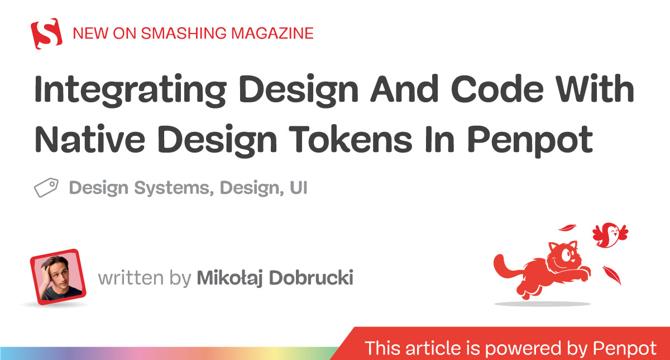Smashingmagazine
4w
231

Image Credit: Smashingmagazine
Integrating Design And Code With Native Design Tokens In Penpot
- Design tokens in Penpot provide a way to document and organize design decisions, enabling collaboration between designers and engineers on variables like colors, typography, spacing, and more.
- Design tokens have gained popularity with the rise of design systems, offering a structured, scalable, and extensible solution for managing complex design systems.
- Penpot is the first design tool to implement design tokens according to the W3C standard, providing a native API for seamless integration with code.
- Design tokens facilitate theming and allow for easy swapping of values across different sets, supporting various design variations and customization options.
- Prior to standardized design tokens, syncing code with design tools was challenging, often requiring third-party plugins for synchronization.
- Penpot's implementation of design tokens streamlines the process, offering a standardized format and eliminating the need for external dependencies.
- Design tokens enable the maintenance of multiple design variants and combinations, making it easier to manage and test changes across different themes and layouts.
- Penpot supports various types of tokens beyond colors, including spacing, sizing, and layout, with plans to enhance token capabilities in the future.
- The native design tokens approach in Penpot allows for math operations using functions like calc(), increasing the flexibility and power of design token values.
- Penpot offers export options for design tokens in JSON format and is working on an API for seamless integration with codebases, with future updates to include support for gradients and composite tokens.
Read Full Article
13 Likes
For uninterrupted reading, download the app